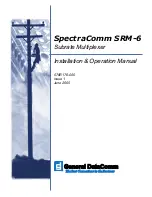
8
Thanks to the input impedance of approx. 1MΩ, it is possible to perform voltage tests with high
input impedances without time restrictions.
The voltage tester also indicates a rotating direction (L or R) with measurements on single-phase
mains (L1 against N). This is not a device malfunction.
Rotating field direction display
The voltage tester can show the direction of the rotating field with three-phase systems. Hold the
voltage tester by the handles and provided. Never touch the device beyond the handle ends. Hold
the two test tips onto the measuring points to be tested. Test tip corresponds to L1, and test tip
corresponds to L2. The applied voltage and the rotating field direction is shown on the LCD display
The rotating field symbols (D) show the corresponding rotating field direction (L = anticlockwise / R
= clockwise).
Continuity check
The voltage tester can also be used as a continuity tester. Always hold the voltage tester by the
handles designed for this purpose. Never touch the device beyond the handle ends. The continuity
tester switches itself on automatically when the test starts, and switches itself back off when the
test has been completed. Check for correct functioning before beginning the test. If you connect
the two test tips with each other, you should heap a beep, and the continuity LED should light up.
If this is not the case, replace the batteries as described under „Inserting/Changing the Batteries“.
The continuity tester indicates resistances of up to<300 kOhm.
Using the Voltage tester as a ” single-pole” phase tester
The Voltage tester can also be used as a „single-pole“ phase tester. Always hold the voltage tester
by the handles designed for this purpose (3 and 6). Never touch the device beyond the handle ends.
This “phase test” serves as a quick test only. Please check again for zero potential with the twin-
pole measuring method before you do any work on this circuit. Observe the regulations regarding
work with electrical systems.
Before beginning the test, check the condition of the batteries by connecting the two test tips with
each other.
Check for correct functioning at a known alternating voltage source. Contact test tip ”L2” with the
measuring point to be tested. In the event of the phase (alternating current between 100 and
690V), the lightening symbol LED lights up.



























